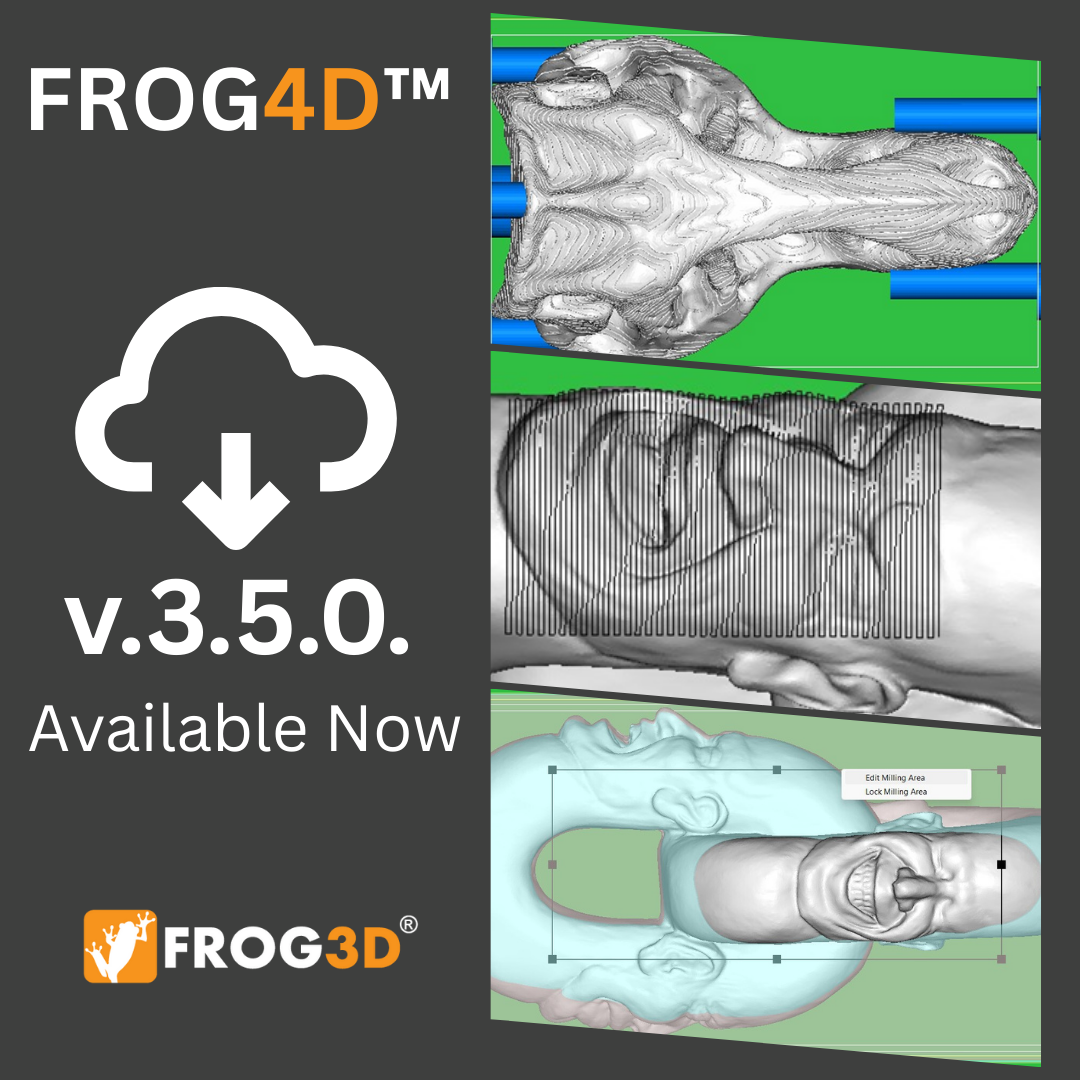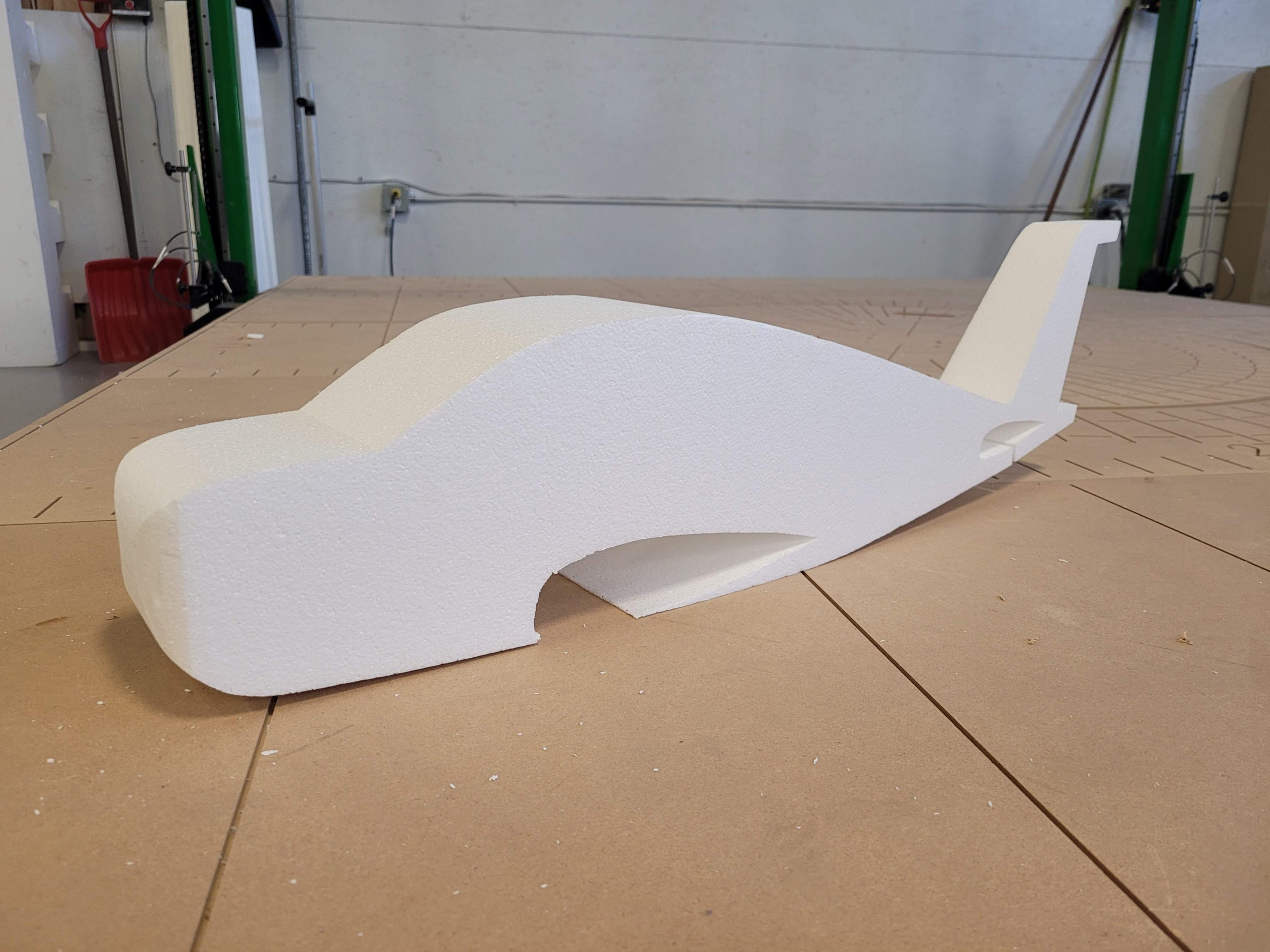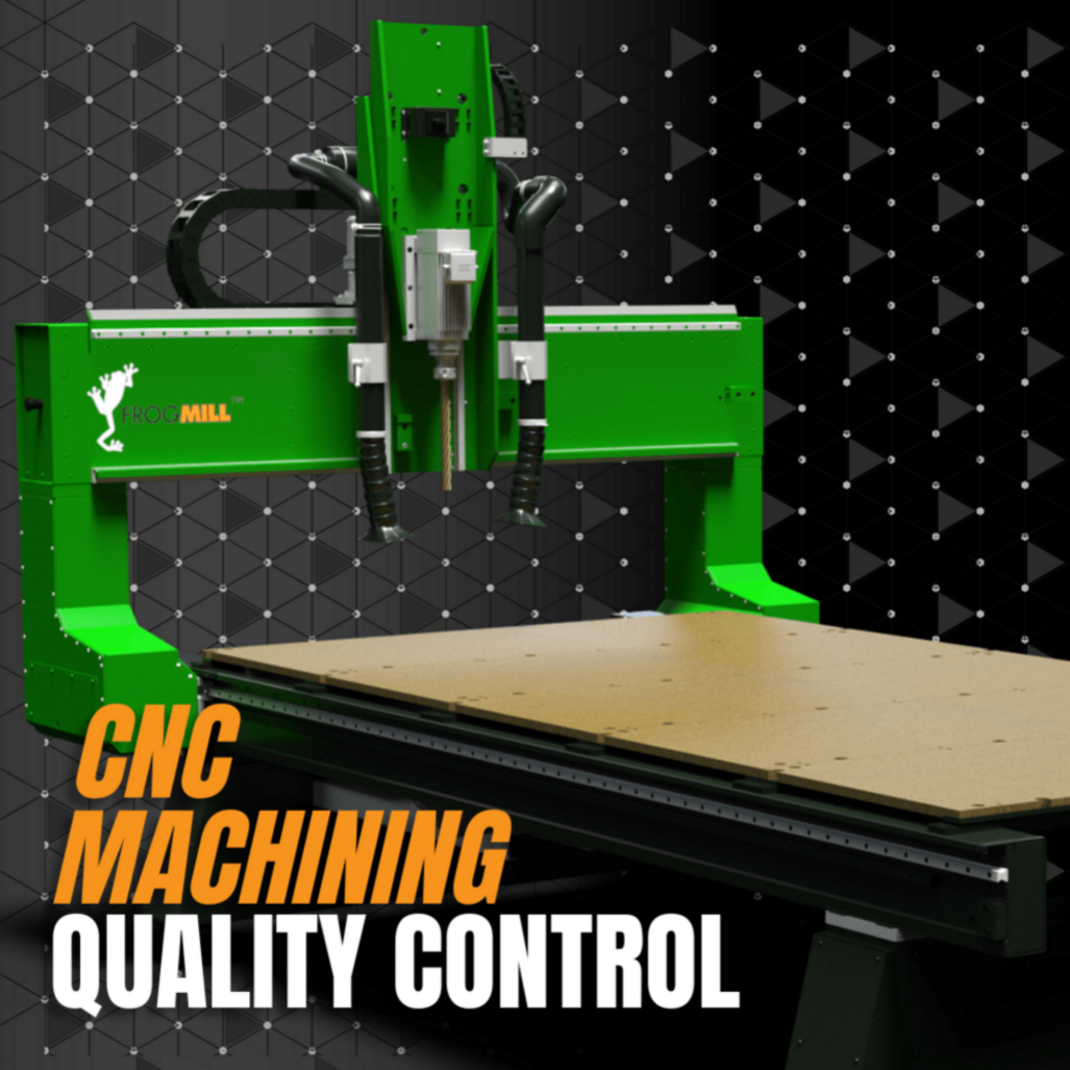Table of Contents
Hot wire foam cutting is a professional service that uses numerical control technology and is considered one of the most advanced and efficient ways of quickly and efficiently processing foam materials. Hot wire foam cutters are used to create parts of different geometries and sizes. When cutting foam with a hot wire, there are many advantages over traditional foam cutting methods, such as increased accuracy and expedited production times. Hot wire foam cutters such as the FROGWire also provide excellent advantages in preparing blocks for milling to further reduce production times and costs. If you are looking for an efficient way to process your foam materials with precision and accuracy, read ahead to learn how to cut foam with a hot wire and the tips and tricks that can help you craft the best possible final product.
The Advantages Of Cutting Foam With a Hot Wire
Hot wire CNC machines can offer many advantages for businesses and individuals. The following are some of the top benefits of cutting foam with a hot wire:
High Precision
Hot wire foam cutters can perform highly precise cuts and this allows for complex and detailed shapes to be created with ease. The heat from the hot wire cutter melts the foam efficiently and leaves smooth edges so that there is no need for extensive post-processing. It is an ideal method to achieve and create intricate shapes, designs, and patterns.
Fast And Efficient
Foam cutting with a hot wire is a quicker and a more efficient process compared to traditional manual cutting techniques. Hot wire cutters allows for faster production of multiple and identical products which is important in projects requiring large numbers of replicable foam parts.
Reduces Production Time
When compared to traditional manual cutting methods, hot wire cutters greatly reduce production time because the automated technique of the machine leads to faster and more efficient production processes. This increases productivity and allows the production of many identical shapes and designs easily, thus making it useful for the mass production of objects and parts.
Customization
Cutting foam with a hot wire will easily allow you to customize foam shapes and proportions to suit your specific project requirements and this makes it an ideal machine for creating custom props, scenery, and architectural structures.
Easy To Operate
Using a hot wire foam cutter is relatively straightforward, which makes using the machine accessible to people of various skill levels.
It’s Versatile
Hot wire foam cutting can be used on a variety of foam materials, such as Expanded Polystyrene (EPS), Extruded Polystyrene (XPS), and other foam varieties. The processed foam can then be used in various applications such as architectural modelling, prototype production, and industrial environments.
Applications Of Hot Wire Cutters
Some of the common types of foam that are utilized in a wide range of industries are expanded polystyrene foam (EPS) and extruded polystyrene foam (XPS). Although there are many varieties of foam available and specific applications may warrant different densities, these two types are most commonly used due to the ease of cutting and low cost to purchase. Through the use of modern technology, hot wire CNC foam cutters can allow you to create a multitude of products out of foam with the most intricate features in a fast, accurate, and relatively cheap way. These machines can be used to create display letters, logos, signboards, decor elements, store props and displays, different kinds of packaging, architectural shapes and large-scale models, props, and precast molds among other products. Here are some industry-specific applications where hot wire foam cutters are increasingly being used:
Packaging Industries
Hot wire cutters are a versatile tool that have transformed how products are created in various industries. One of the industries where our FROGWire is commonly used is in the packaging industry. Hot wire foam cutting is used to cut foam blocks into precise shapes and sizes. Whether you are pre-sizing blocks in pre-production in preparation for 3D Milling, or simply cutting quick inserts to safeguard items in shipping, creating custom designs with foam ensures that the foam fits perfectly in every application.
Construction Industry
The construction industry also greatly benefits from the versatility that hot wire foam cutters can offer with their precise and accurate foam-cutting capabilities. For example, foam insulation is crucial for maintaining energy efficiency in buildings. Hot wire cutters facilitate the production of custom insulation parts that ensure a perfect fit for every piece, which reduces energy loss and strengthens insulation performance.
Automotive Industry
Many manufacturers in the automotive industry utilize hot wire foam cutting to create custom seat cushions and develop interior components. This process enables the efficient production of high-quality foam products. The ability to cut complex designs and contours allows each piece to follow rigorous quality standards which provides safety and comfort for the vehicles’ occupants.
Aerospace Industry
Hot wire foam cutters help shape and carve foam to produce lightweight prototypes, insulation, and components utilized in aerospace applications. Prototype airplane wings quickly and to tolerance to showcase and test aerodynamic designs.
Signage And Display
Cutting foam with a hot wire allows the creation of intricate and eye-catching logos, displays, and foam letters for advertising and marketing projects. Giant 3D billboards are created quickly and to deadline with help of the FROGWire’s fast cutting speeds.
Art, Theatre, And Film Decorations
Artists and sculptors cut foam with a hot wire to shape foam into complex and artistic forms for sculptures and installations, and create stage and set designs in a short period of time. These applications oftentimes require tight turnarounds and budgets, where hot wire cutting excels.
These are a few examples, and the versatility that hot wire foam cutting can offer opens up many opportunities in different kinds of industries. Overall, a hot wire foam cutter is an important tool for any business that works with foam materials and a great addition to both new ventures, and fully functional businesses.
How Does Foam Cut with a Hot Wire?
The way that a CNC hot wire cutter operates is as follows: a Computer Aided Design (CAD), drawing, or another digital representation of the project is first created. The file once complete is then imported with the help of machining software, to help translate the file into instructions that the machine can understand. These instructions include information on speed, locations, and coordination. Depending on the part and the level of details and intricacy, the parts may require further machining processes such as routers, lathes, and other tools to divide different layers and produce the final shape.
A hot wire CNC cutter works by heating a wire to a high temperature by using an electrical current and then passing the wire through the foam material which melts the foam creates clean and precise cuts. In order to cut foam with a hot wire, it is important to know about the components that are part of the cutter. There are control arms/towers, a titanium alloy wire, and the table top, featuring a turntable. The control arms move the wire, which cuts the desired shapes into the foam blocks. The table top features a turntable which foam blocks sit on during processing. Since the hot wire melts the foam before it actually makes contact, securing blocks is not necessary. The turntable rotates objects allowing for hot wire cutting of full 3D parts, depending on the desired geometry.
Cut Foam Effortlessly With Streamline Automation’s FROG3D® FROGWire™
What Is The FROGWire™?
Streamline Automation’s FROG3D® System has all the tools you need to cut foam with a hot wire effortlessly. The FROGWire™ is our advanced CNC hot wire foam cutting machine which allows you to prepare foam for detailed milling or to cut stunning final products. The FROGWire™ is a fully automated CNC cutter and this means that the equipment is computer-driven to ensure the precision and repeatability of every contour and cut. When you cut foam with a hot wire using FROG3D® machines, you will never need to worry about operational dangers, manual errors, or slow turnovers that are usually associated with manual cutters.
Cut Foam With a Hot Wire: Advantages Of Using FROGWire™
A key benefit of automated processes is that the job at hand can be performed at a constant speed for longer amounts of time. For example, the FROGWire™ can effortlessly cut a form within minutes, which is a task that would typically take hours or sometimes even days with manual framing and forming of sheet goods. When cutting foam with a hot wire, the FROGWire™ can create a 2-part mould from a solid piece of foam in less than 4 minutes, which demonstrates its impressive speed and efficiency. In addition, when using the FROGWire™ to cut foam you will be able to rely on the design file being exactly the same as it was several years ago when you first accessed it, and this feature allows repeatability of your processes.
When replacing traditional methods with an automated solution, you are equipped to turn your ideas into reality without hassles and wasted time- which is exactly what the FROG3D® System will offer to you. Impressive cutting speeds will allow you to finish more products faster and will let you ramp up your productivity and give you more time for creativity while also satisfying more customers. Discover the perfect balance between creativity and technology when cutting foam with a hot wire with our end-to-end automated system.
5 Tips To Cut Foam With a Hot Wire
Achieving clean and smooth cuts when cutting foam with a hot wire necessitates accuracy and precision. Consider the following 5 tips to enhance the foam-cutting process for your project:
1. Plan Your Approach
Based on your objectives, there are several factors to consider when creating the production files and this usually begins with software. 2-dimensional profiles are as simple as it gets with our FROGWire™ equipment since they can import directly from a .DXF file. The FROGWire™ system comes complete with a rotary table and advanced software to produce complicated multi-profiled cuts, and this is ideal for roughing out the shape before hand-finishing and joining location beforehand. Unlike a jigsaw or automated router, a hotwire cutter doesn’t remove and insert itself into the cut areas. Instead, it operates more similarly to a bandsaw, requiring it to follow a designated path to obtain each shape or pocket. These paths are usually referred to as lead-in and lead-out lines. If there is a pocket in the middle of a part, it will result in a seam that can be addressed by covering or filling.
2. Consider The Next Steps Ahead Of Time
Before cutting foam with a hot wire, some questions to ask yourself include:
- What is the intended place for the piece?
- Will it undergo sanding?
- Is there a plan to apply a sealant, protective layer, or fiberglass coating?
- How many pieces are you planning to produce?
- Do the pieces need to include pockets or throughways for an armature?
When you plan for and anticipate your next steps, it will save you time, reduce your costs, and improve the quality of your final product.
3. Choose Your Material
When you plan to cut foam with a hot wire, it is important to note that hot wire cutting is not suitable for all materials. Instead of a blade cutting the material, hot wire cutting depends on the heat generated by an electrically charged wire to melt the material as it passes through the raw stock. If your material is heat-resistant, then you are likely to face difficulties in achieving clean and precise cuts. Similarly, extremely flammable materials can create safety hazards and can lead to fire incidents (such as a cozy fire!).
Expanded Polystyrene (EPS) foam and Extruded Polystyrene (XPS) foam are the most common materials used to hot wire cut foam, however, they are not the only options available. EPS foam stands out as the most efficient and popular choice for large projects because this material can be easily sourced in large billets which makes the cutting process so much easier. If you are using laminated or glued-up blocks, this might cause issues as the wire attempts to pass through the glue seam. To avoid this, it is recommended to consider gluing up after the shapes are prepared instead of gluing them before.
To ensure that your cutting is consistent, it is crucial that you avoid using wet foam which can cause the wire to break or drag. It is important to store foam blocks indoors and keep them clean to achieve optimal results. Also, any foreign object such as a sliver of wood in your foam block can disrupt the cutting process and cause the wire to stop mid-cut.
4. Place Your Material On The FROGWire™ Table
Just place your material on the FROGWire™ table, and it is literally as simple as that! Our tables do not require any securing or fastening of materials before processing. Prior to cutting foam with a hot wire, just place the material on the FROGWire™ table and gravity will take care of the rest for you.
5. Advanced Cutting Techniques
If you are in need of a molding detail that follows a radius, instead of altering the shape or form wire, you can explore wedge cutting which is a feature that is included in our software package. Automation offers the great advantage of repeatability. Using jig positions can help with speeding up throughput by allowing the cutting of multiple pieces in a single process. In addition, it simplifies the setup of new blocks and allows you to repeat the same process efficiently. For large nest cutting, our double wire setup can offer a viable solution by effectively doubling your throughput.
When dealing with sharp and low-angle direction changes that can cause corners to melt away, corner control can become challenging. Our software can automate the transitions between the trouble areas, and result in much cleaner end products.
Bonus Tips
When cutting foam with a hot wire, maintain control over your environment, as even a slight breeze can alter the temperature of the hot wire and affect the whole cutting process. Although the temperature can be readjusted with voltage, it is possible that unexpected changes during the cut could lead to unforeseen outcomes.
Additionally, when you cut foam with a hot wire, you will cut a shape out of a block and will end up with both negative and positive results. In some cases, the offcuts can be used as packing materials and provide support to the finished pieces with a matching curvature perfectly.
Conclusion
Regardless of the size or scope of your project, Streamline Automation has a range of FROG3D® equipment and products that are carefully engineered to meet your every fabrication requirement. Unleash your business’s maximum potential, expand product lines, and explore new markets with Streamline Automation’s FROG3D® System. Contact us today to learn how you can enhance your production capabilities and expand manufacturing possibilities with a fully automated and end-to-end foam-processing system.




